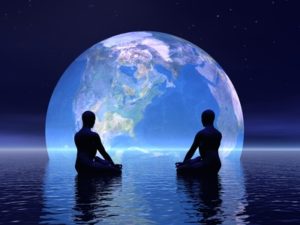 Meditation is a wonderful tool, available to assist us to enhance our sense of self-awareness, not to mention more effectively deal with our responses to stress. More on stress in a later blog…
Meditation is a wonderful tool, available to assist us to enhance our sense of self-awareness, not to mention more effectively deal with our responses to stress. More on stress in a later blog…
I am frequently asked about different paths of meditation and which, in my opinion is the best technique or approach. My answer is invariably that one must find a technique that suits both one’s lifestyle and orientation. By this I mean we all have preferred ways of processing experiences. Some people are more auditory, some more kinaesthetic and some more visual. These personal proclivities may well influence your choice of a meditative practice.
Most people set themselves the task of sitting in meditation to still the mind. This would be no mean feat. The ancient Indians likened the mind to a herd of wild stallions, animals bent on racing out into the world, untamed and unfettered. It would take a lot to be able to rein in such fierce instinct.
I use the metaphor of an automobile. If I drove my car for say sixteen hours (an average day for many of us), would it be reasonable to expect the engine to have cooled down in say thirty minutes? I think not. I see the mind as like the engine in that it has been processing perceptions, thoughts, tasks, problems, feelings, reactions and so on, continually, without a break all day. It is unlikely to go along with a plea to quickly shutdown, without a struggle. And struggle is what many people do, who have set themselves this formidable task.
So, there are two tasks here. First choose a technique that feels comfortable. For example, if I am an auditory processor, I might be attracted to the repetition of a mantra. If I am visual, as in the case of an artist, I might choose a visualization process and so on. The next step is to get to know the ways of the mind. My approach is not to attempt to still the mind as much as observe its response to my effort at fixed attention. The next blog will explore this phenomenon more deeply.

